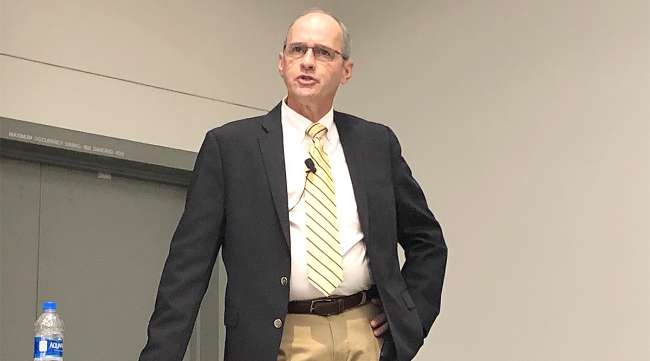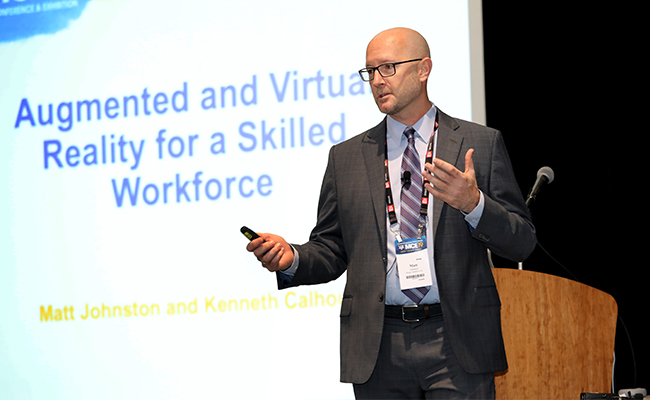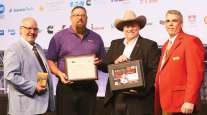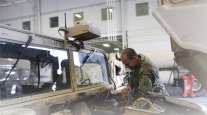Staff Reporter
Gamification Helps Attract Young Technicians

[Stay on top of transportation news: Get TTNews in your inbox.]
SAN DIEGO — Gamification can increase interest and participation in augmented- and virtual reality-based training materials that can be used to attract young people to careers as trucking technicians, according to technical experts.
Kenneth Calhoun, fleet optimization manager for Altec Industries, said an initiative he participates in alongside the Associated Industries of Arkansas has found success by incorporating game-like features. Calhoun, who spoke at American Trucking Associations’ Management Conference & Exhibition on Oct. 6, also serves as ATA’s Technology & Maintenance Council’s general chairman and treasurer.
The initiative, called Be Pro Be Proud, is meant to introduce students to the possibilities of skilled jobs through virtual- and augmented-reality technology. Through the program, a truck and trailer outfitted with simulators visits high schools and trade academies throughout the state.
Calhoun said the program last month debuted a new trailer with 12 interactive exhibits, including demonstrations on working as a diesel technician and on utility poles, along with simulations for a locomotive and an excavator. He said the simulators all have game-like elements; in the earlier iteration, only one activity — the welding simulator — was gamified, he said.
Calhoun said the game mindset makes learning “sticky” and helps to whet a participant's interest in learning and improving in the skill. The Be Pro Be Proud truck already is booked for tour visits well into 2020.
“The demand is coming from education, and it’s coming from local governments [and] other state governments,” Calhoun said.
Matthew Johnston, division head of commercial solutions for Design Interactive Inc., said his company gamified its TMC SuperTech-inspired skills challenge, which tasks users with repairing trucks. Design Interactive, a software company specializing in virtual- and augmented-reality devices, also produces a technician training system called Augmentor.

Johnston by John Sommers II for Transport Topics
Johnston said the high rate of employee turnover and retirements among technicians present a challenge for training new people. When a technician retires, they usually take decades of knowledge with them. Moreover, he noted the work is becoming increasingly complex, as new technology continues to appear in the industry.
Augmented reality technologies can increase the number of places where a skill is demonstrated and decrease costs, according to Johnston. He said one fleet would teach tire analysis by shipping 13 tires with varying degrees of wear to training facilities so students could receive hands-on training with the tires. With augmented reality, those 13 types of wear can be presented without the need to ship materials anywhere.
“We can do it anytime. We can do it anywhere,” Johnston said. “We can do it on real equipment. We can do it on virtual equipment.”
Calhoun said augmented- and virtual-reality technologies can be used as tools to lead tech-savvy people to the trucking and maintenance workplace. He suggested the industrywide lack of drivers and technicians points to a larger issue — a dearth of technically skilled professionals.
“We are not experiencing a driver shortage, and we are not experiencing a technician shortage,” Calhoun said. “What we’re experiencing is a skilled workforce shortage. Somewhere along the way, we’ve created the idea people that make things, build things, repair things and deliver things somehow are less than.”
Want more news? Listen to today's daily briefing:




